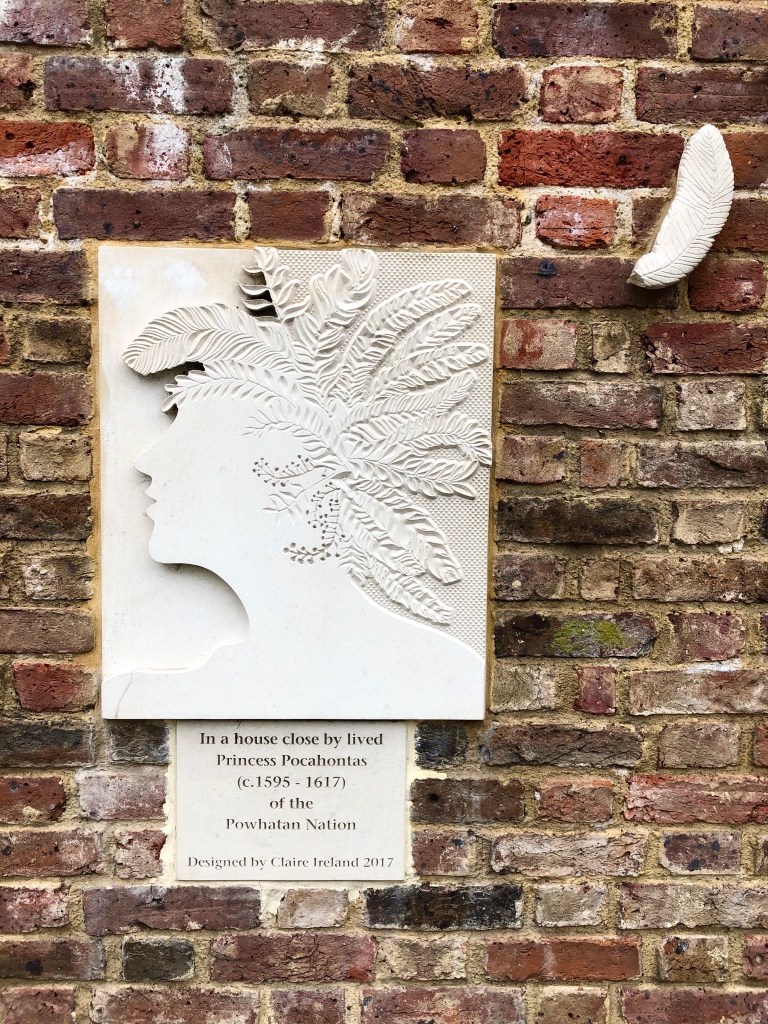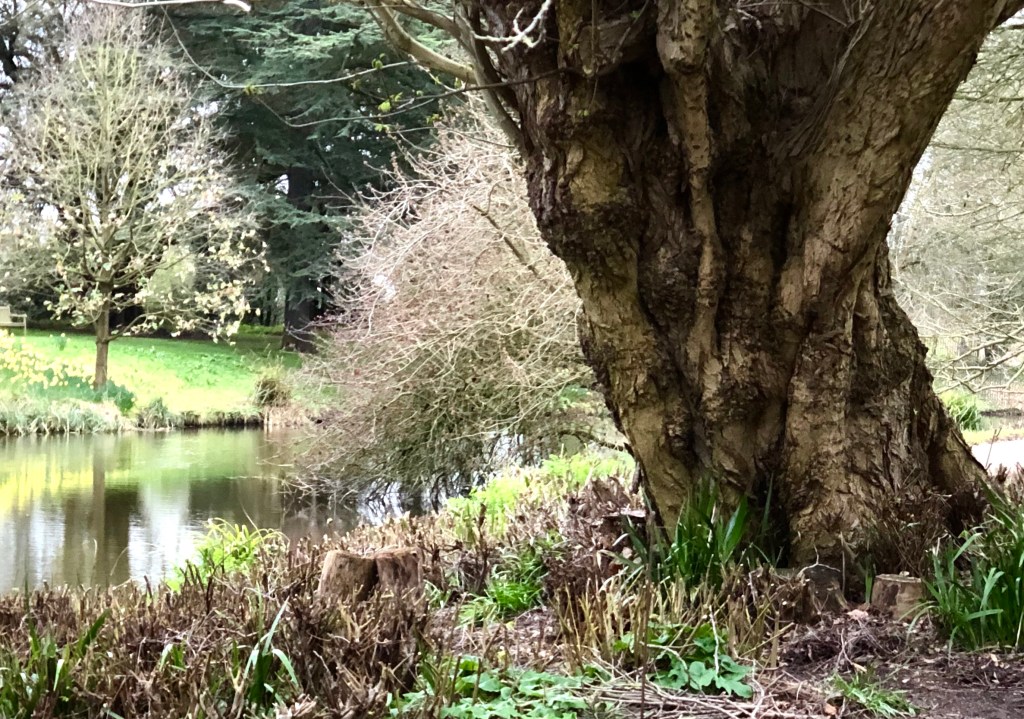
“I had a walk in a beautiful garden today,” I wrote in my notebook. The garden is Syon Park, a private place that using my American sensibilities, belongs to the same family, more or less, for hundreds of years. This 20 acres of verdant English Garden goodness is open to the public with a paid ticket, and to the surrounding community with a subscription pass. A quiet back gate was available to me. This unexpected magnificence was due to an arrangement with the Hilton property that was our temporary address during this siege of virus versus humanity. Good health and goodwill pulsed there amidst swaying daffodils and ancient wood. I found my way there at least once a day and sometimes more.
TreesSyon Park – w: www.syonpark.co.ukTrees

On the first day, we found an enthusiastic garden intern struggling with the muddy division of a deeply rooted clump of perennials. She clearly knew the plants personally and was happy to introduce them by name. By the next day, there were only the signs of work, all tending had ceased. Wheelbarrows were tucked into leafy corners, and piles of trimmed branches and vines stood waiting, like our room service trays that were left outside the door to be picked up “sometime later.” It became rare to see any other people on the rustic and formal paths.

Syon House and garden have had a colorful past. I was surprised to find that Pocahontas, came to visit in 1616 and stayed nearby.
With her father’s medicine man, and a dozen other support staff from her own “kingdom,” they came to be seen. In current retrospect, this journey was intended to raise funds for the failing Jamestown experiment by showing how the indigenous “savages” of the New World could be civilized and Christianized and reimagined as pliable allies. As guests of their Syon Park host, this New World entourage would have walked these same grounds, just like me.
Pocahontas, whose real name was Amonute, didn’t make it home again. The respiratory illness that made London unhealthy for her, and initiated her move from the city to the healthier countryside surroundings, claimed her life. Sailing down the Thames almost within reach of the open sea, she died of a Pneumonia or a TB type illness on March 21, 1617, at the age of 21. She was buried in Gravesend an “ancient town on the Thames,” which some believe was named after the Bubonic plague that killed 100,000 Londoners.

Human history is interesting but it was the trees that captured my attention. Invincible, nearly immortal trees live here. Massive in size, behemoths all, they are matriarchs and patriarchs of their own family lines. Despite their unusual size, their bark and outlines were familiar to me, as many were transplanted from Eastern North America.
They are the largest, oldest trees of their particular breed in the UK. These are called “Champion Trees” here. As the young gardener told me, “Even the people at Kew Gardens come HERE to see our trees,” as she pointed to a Swamp Cypress with the girth of a Sequoia.
These trees garner such respect that some of the bones of this tree community, are left where they fell after death. A swirling base of an ancient Weeping Willow, the very heart of the tree, lies recumbent in a naturalized field of yellow daffodils. On another day, I could imagine children climbing over her, reaching for footholds on this imaginary mountain. Everyone knows that Willows; especially the Weeping kind, love children, and the feeling is mutual.

I leaned into these gracious beings in this strange time. Unexpectedly a few days later, we were “dislodged” so to speak. This Hilton property had contracted with the UK National Health Service to put up their “soon to be needed” hospital staff in this hotel. An excellent place for their upcoming guests, and a welcome reprieve from impending closure and hotel staff layoffs. I asked a nervous front desk host if the garden would remain open for these frontline people? “Indeed,” he said. It was their plan to continue to leave the back gate accessible to their guests, despite the lock-out of local residents. Physical distancing of a different variety was about to be initiated. And in the strange synchronicities are our standard, we left Syon Park on the 403 year anniversary of Amonute’s death.

The tree “rule of thumb” is simple: “As Above, So Below.” Roughly what is seen above the dirt has a mirror image; below the dirt. They have survived, even thrived throughout human turmoil because they have both. They are deeply rooted in the Earth, and extending themselves upward, reaching to the heavens at the same time. Sounds like a good plan.

As usual, an excellent but too short a read. Thanks. Needed toi cheer one in these time that could just as easily be lifted from the last book of the good book.
LikeLike